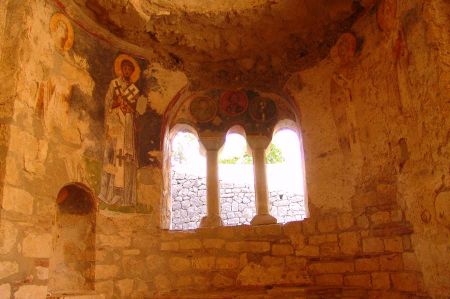Nicholas: Santa Basil in Greece and witch Befana in Italy
- Written by Portal Editor
St. Nicholas Day on December 6, 2013 has long been a thing of the past in Germany. However, it is still expected in other countries such as Italy and Greece.
The benefactor Nicholas, who originally came from what is now Turkey near the ancient city of Myra, today's Demre, remains one of the best-known saints of the Eastern Greek Orthodox Church and the Catholic Latin Church. Various rumours and myths speak of his benefits in ancient Lycia.
Nicholas exclusively as the patron saint of sailors

Since December 6th was later the day of St. Nicholas' death, it was designated "St. Nicholas Day."
The myth of putting gifts in shoes supposedly also gives rise to the custom of children putting their carefully polished shoes outside the door on the evening of December 5th so that St. Nicholas can fill them with little surprises.
Myths of Basil of Caesarea

Santa Basil goes back to the recorded myths of Basil of Caesarea, who was one of the first important church fathers of the early Christian period in Caesarea, today's Kayseri, in Asia Minor. Basil preached for the rich to help the poor and founded orphanages and even nursing homes and hospitals. For this reason, he was declared “Santa Basil” by the Greek Orthodox Church, who was supposed to make all children happy. Santa Basil is usually dressed in red, well-fed and has a long white beard - making him very similar in appearance to his “twin brother” St. Nicholas.
A witch named Befana
There is also a female counterpart to Santa Claus who doesn't stuff presents into the boots but prefers the stockings of good children and only does that on January 6th.
Here it is a witch named Befana who is responsible for distributing sweets and presents. On the night of Epiphany, she flies from house to house on her broomstick, slides through the chimney and gives presents to the good children - but she has coal for the naughty ones.
There are also parallels here with the Witch of the Brocken.
However, globalization has long since found its way into the area of these myths and rites. Customs and customs have long since changed and adapted across borders. The typical Italian pastry form of the Christmas season in the form of the Panettone cake has long been native to Germany. Like the German Christmas stollen, the panettone also contains candied fruits and raisins and is enjoying an ever-growing number of lovers. The dome-shaped cake, about 20 centimetres high, is sold in cardboard boxes, which make it appear even more voluminous.
The Christmas stollen from the baker Kemal
We were also amazed at a Christmas tree that had already been erected for the first Advent in the living room of a couple with a child in southern Germany. Here you just want to enjoy the Christmas living room decorations a little longer, so the tree was colourfully decorated with lots of balls. A real contrast to the dreary, foggy weather outside.
Please read as well: